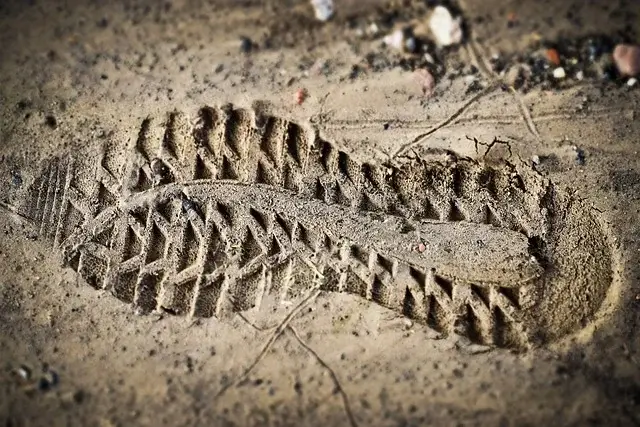IMPORTANCE OF FORENSIC SCIENCE
THE IMPORTANCE OF FORENSIC SCIENCE IN CRIMINAL JUSTICE
Published in © 2019 JETIR February 2019, Volume 6, Issue 2 www.jetir.org (ISSN-2349-5162)
Author – Rekha Khandelwal
BSC, LLM, NET, PHD Scholar
Abstract :
This study has been undertaken to investigate and analyse the role of forensic science in crime detection. Forensic science has become an unavoidable tool in criminal investigation because the criminals are also using new scientific technologies for committing crime. Therefore, the orthodox methods of investigation have become almost useless. Forensic science is being updated by latest tools and technologies which help in finding out the culprit and collecting the evidence to prove him as culprit. Therefore, forensic science is the demand of criminal justice system.
The condition of our country is miserable at this time. Today crime is increasing day by day. It is the duty of the state to create a crime-free atmosphere by keeping a check on the increasing crime and punishing the offenders. When a crime occurs, it is the duty of police to trace and imprison the criminals. The crime scene is the most important place for the investigating officers from where they can get the useful information about the crime and can gather evidences about what occurred during the crime. So, the crime scene may be the best source of physical and other evidence.
Today the criminals are using advanced tools and techniques for crime. Without the help of science, police is helpless and cannot collect useful information and physical and other evidences. ‘Forensic’1 Science is playing the vest role to collect evidence in this situation. The main use of forensic science is for the purposes of law enforcement to investigate crimes. The word ‘Forensic’ is a latin word which means belonging to crime of justice. Forensic Science uses tools and techniques of natural science in criminal justice for recognition, identification, individualization and evaluation of physical evidence.
Forensic Science is being used in solving different types of criminal cases like rape, accident related incidents, missing person, kidnapping, murder, fraud, suicide, forgery etc.
When a crime occurs, forensic team is called upon which collects evidences.
All the questions related to the crime are solved such as,
Who Committed Crime?
Which Crime occurred?
When the crime occurred?
How the crime occurred?
Why the crime occurred?
There are many experts which form the part of the forensic team. Each expert has a specific area of work. There are two main areas of forensic science and these are the minimum requirements for a criminal investigation:
a. “Field Officers : These are technicians who visit the scene of a crime and collect the physical evidence that may be related to the crime. They also do the work by taking photographs of the scene and compile in the form of documents and videos. b. Lab Officers : These are technicians who analyze and complete tests on the evidence collected by the field officers. Sometimes the above two roles are broken into expert areas. These include : c. Crime Scene Investigator : these are the people who visit the scene of the crime to find, collect, protect and transport all the evidence they have collected back to the crime lab. d. Latent Print Examiner : This specialist examines fingerprints, Palm prints and footprints. e. Firearms Examiner : This expert examines the evidence to identify what sort of fire was used by comparing bullet and shell casings and searching for and identifying gunshot residue. f. Tool Mark Examiner : This person is similar to the fingerprint examiner, but rather than looking for human fingerprints they instead look for any distinctive marks that may have been left by tools that the criminals used. g. Document Examiner : This specialist examines any documents left at the scene. Document examiners determine authenticity and authorship they also look for any alterations that may have occurred to the original documents and may be asked the identity, if a particular copier or typewriter has been used in the creation of a document. h. Trace Evidence Examiner : These experts analyze and compare any dresses that the criminal may have left behind. This person is responsible for analyzing and comparing hair, fibres, glass, soil and paints to work out their type and origin. While the above roles relate to all crimes, there are some additional experts who are called upon if the crime involves finding a body. The roles specifically relating to examining remains or murders are : Forensic pathologist : This person is responsible for examining the body, undertaking autopsies to determine cause of death and is required to collect any evidence that can be found on or in the victim. Forensic pathologist may also examine living victims to determine the causes and ages of injuries the live victim may have received during the crime. The forensic pathologist uses autopsy reports, police reports, medical records, suspect/fitness interviews and the results of crime lab evidence analyses in the pursuit of answers.
Forensic Anthropologist : in the case where remains are difficult to identify or are skeletal, a forensic anthropologist is called in. These experts can use skeletal remains to work out age, sex and race of the deceased. They can also identify any injuries or illnesses that the victim may have suffered and sometimes can even establish the time of death. Forensic anthropologists can also use remains to do toxicological, chemical and DNA test to help them to discover more about the victim. These experts don’t just do lab work, but they also can find out a lot by visiting the location where the remains were found. Forensic Odontologist : These experts are basically forensic dentists. They help to identify bodies by looking at and matching dental patterns with the dental records collected from dentists. They are also called in, in cases where there are bite marks or teeth found. Forensic Entomologist : Entomology is the study of insects. A forensic entomologist uses his knowledge of insect life cycle to determine time of death. It is common for bodies that have been found sometime after death to be invaded by hungry insects. This expert can also use his knowledge of habitat where different insects live, to work out if a body has been moved or not.”2 When investigators visit a crime scene, they have to follow a number of procedures. It is the duty of investigator to firstly preserve the life and assist the injured victims. Secondly, the suspected persons should be detained. Their behavior and their statements should be documented and the objects which they have may also be seized. Witnesses of the Crime scene may be detained so that they do not get opportunity to discuss what they saw with the others. Thereafter the process of collection of evidences and their examination starts.
With the help of forensic techniques and experts, the complete query of crime is solved including the object of the crime. Forensic science helps in finding out clearly the crime, the criminal and the motive behind the crime.
“Forensic science is a versatile and enormously powerful tool in the investigation of a crime.”3
After the occurrence of the crime, different types of evidences may be found at the crime scene. Many types of physical evidences may be found in diverse types of crimes. Blood, semen, urine, vaginal secretions, saliva, vomit, hair, fibers, fingerprints, footprints, teethmarks, impressions, drugs, fibres, firearms and ammunitions, glass, hair, viscera, petroleum products, stains and powder residue, soils, minerals, tool marks, wires, cables, serial numbers, wood, pollens and other vegetable matter, etc. that could link a person or object to a crime scene may effectively be used as evidence.
Physical evidence can be obtained from three main sources :
- The scene of crime
- The victim, if any and
- The suspect and his environment
Physical evidences are collected by investigators with the help of forensic team and they are very useful. After analysis, it becomes easy to identify the criminal, the victim and the missing person. Experts make the picture of criminals on the basis of description provided by victims and witnesses. This also helps in identifying criminals. In this way forensic report helps in court of justice. Whenever a crime is occurred and eye witness is not available at the crime scene and also the criminal could not be located, then the fingerprints, footprints, palm and sole prints, body prints, tool marks and trace marks of the criminal found at the crime scene can be analyzed with the help of forensic science and which makes it easy to identify the criminal.
It is with the help of forensic science that the criminals can be identified, detained and efforts can be made to punish them or take remedial measures to change their behavior. Then only the victims may get justice and we can expect a peaceful society.
Article By :
Rekha Khandelwal
BSC, LLM, NET, PHD Scholar
1 B. S. Nabar, Forensic Science in Crime Investigation, 2002
2 Dr. Ishita Chatterjee , Law of forensic science 2015
3 B.S. Nabar, Forensic Science in Criminal Investigation (2002)

